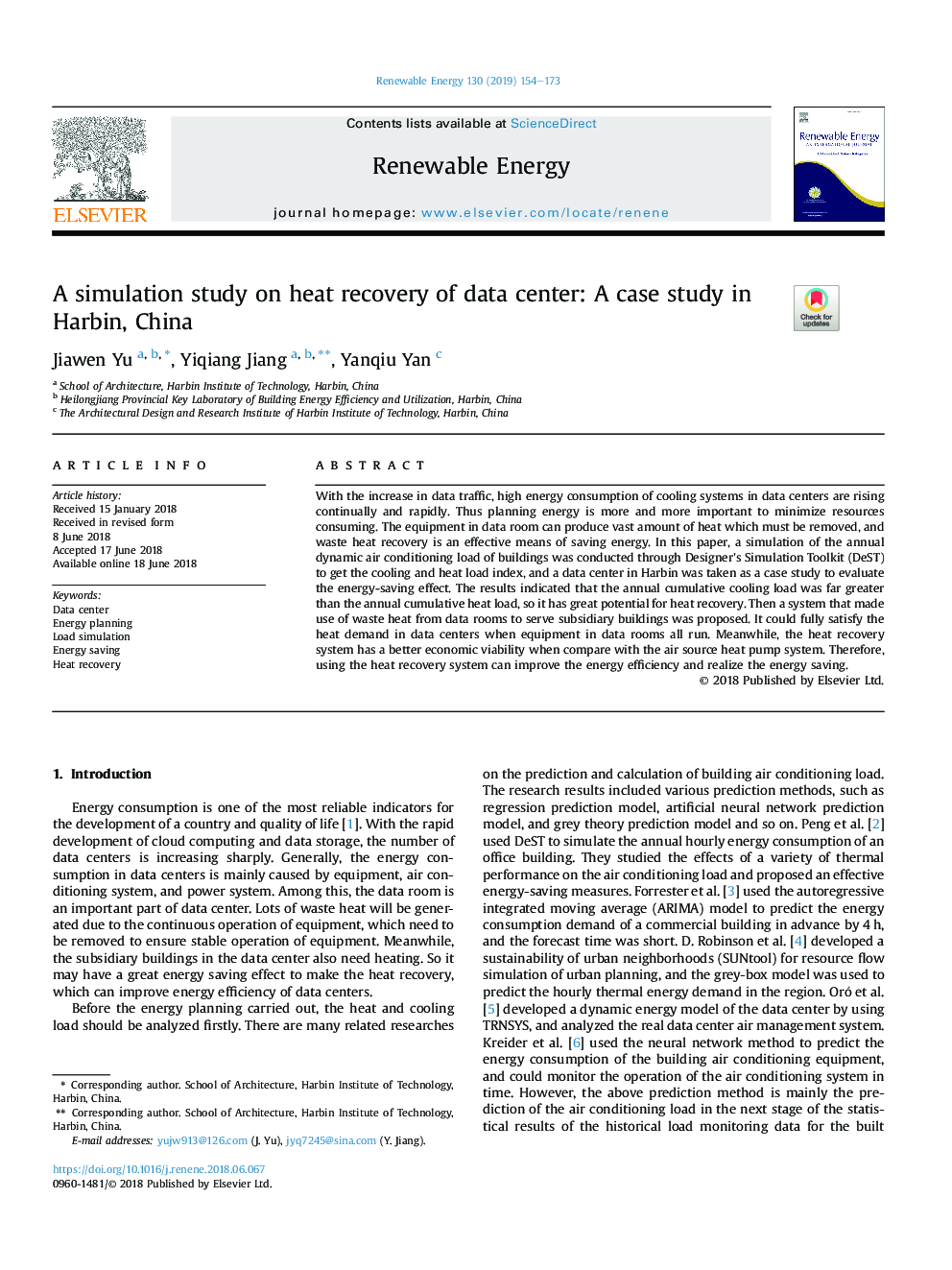| Article ID | Journal | Published Year | Pages | File Type |
|---|---|---|---|---|
| 6763743 | Renewable Energy | 2019 | 20 Pages |
Abstract
With the increase in data traffic, high energy consumption of cooling systems in data centers are rising continually and rapidly. Thus planning energy is more and more important to minimize resources consuming. The equipment in data room can produce vast amount of heat which must be removed, and waste heat recovery is an effective means of saving energy. In this paper, a simulation of the annual dynamic air conditioning load of buildings was conducted through Designer's Simulation Toolkit (DeST) to get the cooling and heat load index, and a data center in Harbin was taken as a case study to evaluate the energy-saving effect. The results indicated that the annual cumulative cooling load was far greater than the annual cumulative heat load, so it has great potential for heat recovery. Then a system that made use of waste heat from data rooms to serve subsidiary buildings was proposed. It could fully satisfy the heat demand in data centers when equipment in data rooms all run. Meanwhile, the heat recovery system has a better economic viability when compare with the air source heat pump system. Therefore, using the heat recovery system can improve the energy efficiency and realize the energy saving.
Related Topics
Physical Sciences and Engineering
Energy
Renewable Energy, Sustainability and the Environment
Authors
Jiawen Yu, Yiqiang Jiang, Yanqiu Yan,
